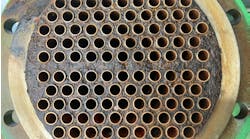[pullquote]Chinese water torture — the continual dripping of water, usually on a person’s forehead — certainly rates as one of the more detestable interrogation techniques. Chemical plants must contend with a “drip” torture of their own. In this case, though, DRIP stands for data rich, information poor. Facilities face the frustration of generating ever-increasing amounts of data but not being able to take full advantage of that wealth of inputs.
The reasons for the burgeoning buildup of data aren’t at all surprising. For one, the decreasing cost and increasing capabilities of wireless sensors and networks have opened up vast opportunities for gathering data that otherwise would be difficult or uneconomic to obtain. (Our recent article “New Capabilities Boost Remote Monitoring,” highlights some developments, including the use of sensor-equipped drones to monitor gases and particulates.) Also, many plants’ greater emphasis on condition monitoring to foster predictive maintenance and optimization of asset performance is leading to the installation of more sensors to check vibration, bearing temperature and a host of other parameters. Meanwhile, technical developments in sensors, such as for online corrosion monitoring (see: “Refineries: Rethink Corrosion Monitoring”) are opening up further opportunities to gather data more frequently. Then too, the emergence of easy-to-use handheld tools for data capture and storage as well as powerful apps for smartphones and tablets is enabling plants to more easily gather inputs from local sensors not hooked up to a network. In addition, the push for fuller, more-seamless data sharing among suppliers and customers is boosting the type and amount of data accessible to a site. Clearly, the amount of data available only will increase — and probably will grow quite extensively.
[callToAction ]
Finding important relationships and trends among all those data can provide massive value in a wide range of ways, such as preventing process disruptions, improving product quality and boosting safety. However, mining such data for insights has been daunting — usually requiring the skills of data scientists.
Wouldn’t it be wonderful if engineers at a plant could dig deeply into the data to uncover all the secrets? Fortunately, that’s one insight that hasn’t remained hidden. Reflecting this, over the last few years I’ve noticed a growing number of sessions at technical conferences and booths at trade shows devoted to predictive analytics software aimed at engineers not data scientists.
As our cover story “Data: Finding What's Hiding Gets Easier,” notes, the prospect of engineers at a plant successfully dissecting disparate data for insights is becoming increasingly achievable thanks to developments in predictive analytics software. Another article this issue, “Predictive Analytics Capture Plant’s Heartbeat,” describes the impressive results that one operating company has achieved.
Several approaches can underpin predictive analysis; particular vendors generally focus on one method and tout its unique qualities. The technical talks I’ve heard indicate that each of the various methods can provide value. So, while it’s sensible to understand the differences in their underlying concepts before selecting among software packages, any package chosen should yield a significant advance over what plants can do with their data now.
It’s time to start addressing the issue. We should strive for DRIP-free plants!



